It’s starting to feel like déjà vu. Several years ago, short hotel lead times made headlines causing problems and frustrations in the meetings and events industry. Now, they are back under different circumstances. As the saying goes, hindsight is 20/20, so let’s remind ourselves of what happened back then.
A Bit of Background
In 2015, we experienced an economic plateau after seven years of straight growth out of the 2008-2009 recession. The growth (demand) led to a serious lack of supply, and it became a seller’s market. On top of that, the perceived threat of economic uncertainty and significant downturn became the main cause for a paradigm shift.
Many companies wanted to lessen the impact of the economic environment by shifting funds allotted to sales and marketing. This meant that some chose to do half-year, or even worse—monthly or quarterly fund distributions. The XYZ companies of that time were no longer doling out their marketing program funds on an annual basis at the start of their new year. They needed to find ways to save money wherever they could.
Holding back was the name of the game, and many companies at that time began mitigating costs by implementing this quarterly fund distribution plan. This then turned into a cycle of creating a plan each quarter, then gauging return on investment, before starting all over again for the next quarter. This presented problems and frustrations in the meeting industry as hotel supply was low and companies were demanding rooms with only a few months’ notice. Lead times were short, and hotel costs increased due to high demand. When companies chose a quarterly budget planning cycle, they inadvertently increased their costs with hotel spaces. Back then, it wasn’t easy for a company to align dates, objectives, and budgets, and we are seeing this trend reappear again due to short lead times. Today, we can learn from past missteps.
The New Normal
It’s different this time, given it is pandemic related; however, we are experiencing economic conditions industry-wide which are once again leading to short lead hotel times. There certainly is a lot more supply inventory (hotel rooms and meeting space) than seven short years ago, but the enormity of the cause today is simply pent-up demand—leading to significant compression.
Most companies halted live events altogether in mid-March 2020. Cara Banasch, VP of Sales at Omni Hotels & Resorts told me, “As restrictions lifted, 2020 and most 2021 business shifted to 2022, and beyond. So, this meant group plans during the pandemic were finally being carried out and even today are still being actualized. And this is in addition to annual events that were already on the books for this year and next.” All companies across the globe are trying to catch up—the result is 30 months of meetings and events over the next year. And that’s the compression we’ve been talking about. Everyone is planning this year’s meetings as well as past years’.
It used to be ‘in the year for the year,’ and now for all of us doing 3x the sourcing compared to 2019 levels, it is ‘in the month for the month,’ too, which presents additional challenges on all sides. The outcome is a seismic shift back to a seller’s market—buyer’s beware!
What can we do about this unique set of challenges we all face as we transition to our next normal dealing with short lead hotel times?
Tips for a Seller’s Market
1. Be Flexible
Banasch tells me, “A lot of clients just give one date and one pattern, and then hotels spend a bunch of time going back and forth trying to assess capability to make things fit. Offer alternative dates and patterns for better, quicker responses.”
2. Wants vs Needs
You’ll need to make concessions. What do you need to have? Knowing what needs to happen vs. what is a want may speed up hotel response times. Consider shortening the list to must-haves.
3. Shorten Decision Timelines
Rest assured the first response a hotel gives goes to the shortest decision timeline called out. Hold your internal stakeholders to a suspense date on their decision to move to contract. And share it!
4. Be Careful with “Pandemic Heartburn”
This is a term I’ve created. The contracting ‘supply chain’ has become a bottleneck as both sides (buyers and hoteliers) have become more risk-averse. Which in turn, lends itself to unique legal requests (likely from feeling burned on other contracts). Clauses are created for rebooking denials, cancellations, and force majeure clauses. I say let’s stop these practices. It’s going to be ok. Fairness and reasonableness will prevail once again.
5. Increase Budgets
Make sure your budget reflects the current realities. A good start would be to add a 10% increase on most categories tied to your event. Banasch says, “Everyone is coming back post pandemic with a different set of realities and each market varies in their business circumstances. There are cost factors across the board with labor, food, and beverage cost increases, and other supply chain items that represent additional expense. Similar to what consumers are seeing at the grocery store, prices have increased since 2020.” And it’s not just hotel, food & beverage. Consider air and gas prices on transfers, and most everywhere else, too. Make certain your budget reflects the current inflation in all areas of your program!
6. Be Patient
In addition to extreme compression and quick turn requests on short hotel lead times, hotels are trying to regain staffing to pre-pandemic levels. Banasch shared recently that Omni Hotels & Resorts has staffing as a top priority as they strive to grow from current levels of 70% (of pre-pandemic staffing levels) over the next few short months with thousands of open positions. And we find that this is true for most all hoteliers. Consider the effect this has on hotel services in the short term, too.
Someone wise once told me — the industry ebbs and flows. This too shall pass. Brightspot is here to help you conquer short hotel lead times for your next meeting. Head over to our Events page to see how.
(Cover Photo: Omni Scottsdale Resort & Spa at Montelucia. Photo courtesy of Omni Hotels)







